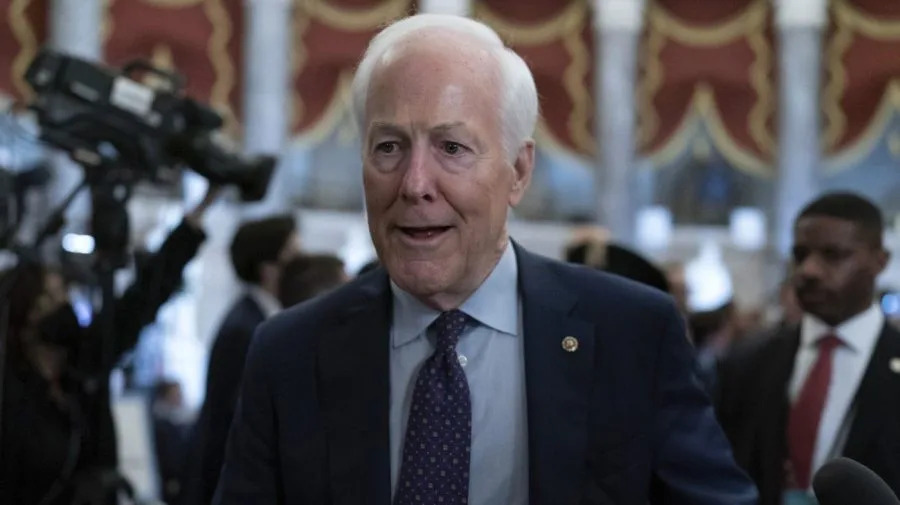
Not content with redrawing California’s congressional maps, California Gov. Gavin Newsom (D) is also attempting to redraw the 2028 campaign.
Indeed, by signing legislation to send the redistricting question to a special election this November, Newsom is tipping his hand, revealing a strategy based on the idea that whoever fights Trump hardest will have an edge over other Democratic contenders.
Put another way, Newsom seemingly believes landing a punch on Trump will curry favor with national Democrats and allow him to separate himself from what figures to be a crowded field for Democrats in 2028.
On this, the data suggests that he may be correct.
A recent poll of Democrats, conducted by UC Berkeley-Citrin Center, revealed that nearly two-thirds (63 percent) of national Democrats support California redistricting as a response to Texas. In the same poll, 70 percent of national Democrats say politicians drawing congressional districts to help their own party is “only acceptable if the other party does it first.”
By positioning himself at the center of this fight, Newsom may already be gaining a sizable share of support among those Democrats. He’s also sucking up much of the media attention that may have gone to other potential Democratic contenders.
The 2028 primaries are a long way off, but Newsom has the highest odds (29 percent) on the betting site Polymarket. That is more than twice the runner-up Rep. Alexandria Ocasio-Cortez (D-N.Y.) at 14 percent, and Newsom also enjoys a significant lead over former Transportation Secretary Pete Buttigieg (7 percent).
Newsom has also set up a beneficial contrast between himself and Ocasio-Cortez, who has been largely unable to do anything effective in opposing Trump.
It is worth noting that, although former Vice President Kamala Harris leads in national polling aggregated by Race to the White House (23 percent to 13 percent), Newsom’s share of the vote has doubled since mid-June as he has taken a harsher stance against the Trump administration.
To that point, Newsom’s “fight fire with fire” strategy has propelled him above Harris in their home state. Emerson polling from earlier this month shows Newsom with a 12-point lead over Harris among California Democrats (23 percent to 11 percent).
With this in mind, the upcoming fight over California’s redistricting allows Newsom to kill multiple birds with one stone. In addition to burnishing his credentials as a fighter — a top priority for all Democrats — it gives the governor a chance to remain in the national spotlight and raise his profile among voters and donors, as well as build support among the left wing of the Democratic Party.
Similarly, a win for Newsom on redistricting would be the most visible evidence of Democratic success against Trump’s excesses, something Newsom would almost certainly stake his campaign on.
Despite having won multiple court cases against executive orders, new House maps will have a more tangible effect than drawn-out legal victories.
Importantly, there are significant risks in Newsom’s strategy that go beyond the fact that nobody, Democrat or Republican, has successfully beaten Trump at his own game. The most immediate risk is that California voters will reject redistricting, which would be extremely humiliating for Newsom.
There is a well-funded GOP campaign against it, as well as opposition led by former Gov. Arnold Schwarzenegger. And by a nearly two to one ratio (64 percent to 34 percent), California voters oppose partisan redistricting in principle.
Moreover, as the governor of deep-blue California, Newsom was always going to be vulnerable to attacks that he is too far left to win a general election. A blatantly partisan move like this one could reinforce those perceptions.
For now, he seems to be reasoning that he must win the primary first to have a shot at the White House, and this is his chance. But this latest effort could leave him vulnerable.
In that same vein, the economy is voters’ top concern and it still will be in 2028. Newsom may struggle on that issue, particularly given perceptions that he is a very liberal Democrat. Per Wall Street Journal polling, voters disapprove of Trump’s handling of inflation (net -11) yet trust Republicans over Democrats by a 10-point margin — a striking disparity that underscores voters’ distrust of Democrats’ economic agenda.
Likewise, even though national Democrats support partisan redistricting, Newsom has struggled with both flanks of the Democratic Party. Progressives disapproved of his hosting MAGA-influencers Charlie Kirk and Steve Bannon earlier this year on his podcast. And moderates may hesitate to back Newsom, given perceptions that he is too liberal and that California under his leadership has struggled with crime, homelessness, bloated government, suffocating regulations, climate mandates and immigration.
Whether or not Newsom can overcome his personal general election vulnerabilities, and those of Democrats writ large, remains to be seen. But, given his rise in the polls and Democrats’ deep desire for someone, anyone, to fight back against Trump, he may well be playing his hand as well as anyone could.
Douglas E. Schoen is a political consultant who served as an adviser to President Bill Clinton and to the 2020 presidential campaign of Michael Bloomberg. He is the author of “The End of Democracy? Russia and China on the Rise and America in Retreat.”
Copyright 2025 Nexstar Media, Inc. All rights reserved. This material may not be published, broadcast, rewritten, or redistributed.
For the latest news, weather, sports, and streaming video, head to The Hill.








Comments